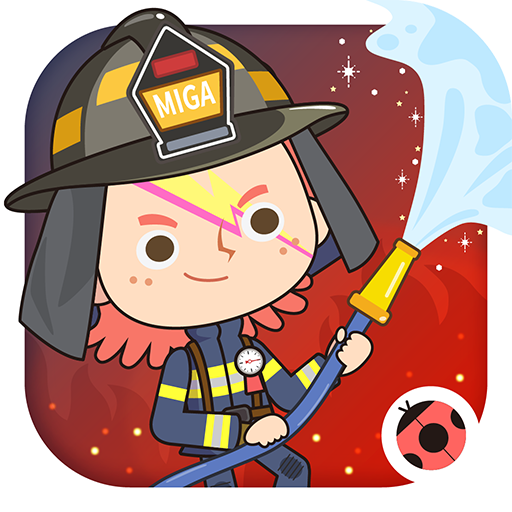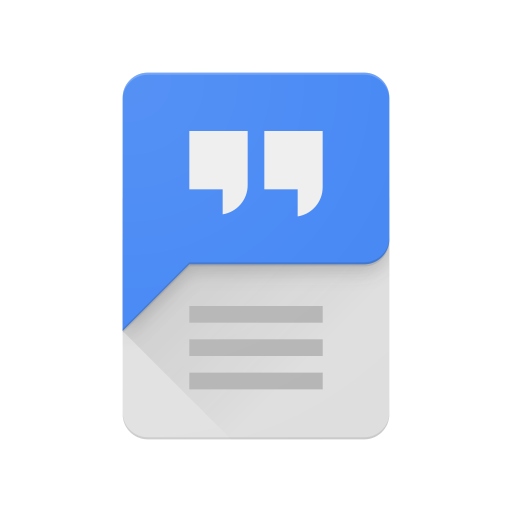Periodic Table 2024: Chemistry - Chemistry reference guide
Master chemistry with an interactive, up-to-date periodic table app.

- 3.2.15 Version
- 4.9 Score
- 5M+ Downloads
- In-app purchases License
- 3+ Content Rating
The Periodic Table app provides a wealth of data on chemical elements for free. Whether you are a student, engineer, housewife, or anyone interested in chemistry, you will find valuable information. Chemistry is one of the most important sciences and a key subject in schools, with the study beginning with the Periodic Table.
This app offers an interactive approach to learning, utilizing modern technologies familiar to today's students. The Periodic Table app, available for Android, presents the entire periodic table in the long-form approved by the International Union of Pure and Applied Chemistry (IUPAC). It also includes a Table of Solubility.
Key features of the app include:
- Information continuously updated when clicking on any element
- Images for most elements
- Direct Wikipedia links for further information on each element
- Search feature for easy navigation
- Sorting into 10 categories:
• Alkaline earth metals
• Other nonmetals
• Alkali metals
• Halogens
• Transition metals
• Noble gases
• Semiconductor
• Lanthanides
• Metalloids
• Actinides
Elements within a selected category are highlighted in the search results and displayed prominently on the main screen.
About Periodic Table 2024: Chemistry
Periodic Table 2024: Chemistry is an education app developed by www.chernykh.tech. The APK has been available since March 2016. In the last 30 days, the app was downloaded about 120 thousand times.
It's highly ranked.
It's rated 4.83 out of 5 stars, based on 410 thousand ratings. The last update of the app was on September 23, 2024. Periodic Table 2024: Chemistry has a content rating "Everyone".
Periodic Table 2024: Chemistry has an APK download size of 24.21 MB and the latest version available is 3.2.16. Designed for Android version 5.0+. Periodic Table 2024: Chemistry is FREE to download.
Understand Periodic Table Organization
Unless your goal is only memorizing the order of the elements, you’ll need to know how the elements are organized on the periodic table. Knowing the table’s structure makes memorization a lot easier.
- The periodic table lists each element in order of increasing atomic number. The atomic number is the number of protons in an atom of an element. There are 118 elements, where hydrogen is atomic number 1 and oganesson is atomic number 118.
- Each element has a one- or two-letter symbol. Many memorization techniques have you memorize the symbols rather than the element names.
- There are 7 rows, called periods, and 18 columns, called groups. The two rows of elements of elements shown below the periodic table are the lanthanides and actinides. They actually fit into periods 7 and 8 and group 3. The lanthanides cover atomic numbers 57 to 71, while the actinides are atomic numbers 89 to 103.
- Period 1 only contains 2 elements. The second and third periods contains 2 elements on the left and 6 elements on the right. Periods 4 and 5 each contain complete rows of 18 elements. Periods 6 and 7 each have 17 elements, with empty spaces for the lanthanides and actinides. The lanthanides and actinides each have 15 elements.
- Elements in group 17 have names that end with “-ine.”
- Elements in group 18 have names that end with “-on.” Be careful, because boron, carbon, and silicon also have this ending and are not in this group.
Knowing all of this, you can draw a blank periodic table. Otherwise, print out a blank periodic table and use it for practice.
Selecting a Method That’s Right for You
We all learn a bit differently from one another. A highly visual person might choose a memorization method that uses images, such as flash cards or a memory palace. Another person learns better from hearing information. Learning the element song is a good choice for them. Yet another person is more verbal and readily understands symbols and how they represent words. This person chooses a mnemonic device, acronyms, or nonsense words made using element symbols.
Whichever method you select, don’t believe claims about memorizing the periodic table in ten minutes. Yes, you can learn the first 20 elements that quickly, but memorizing the whole table takes time. Also, know there is a difference between cramming and real learning. It takes time and practice committing something to memory. Your brain needs to build and reinforce memories and this takes around a week (assuming you practice every day).
Method #1 – Memorizing the Periodic Table Using Brute Force
The brute force method is not a particularly fun or popular way of memorizing the periodic table. But, it’s effective (and is the method that works best for me). There are a couple of options here. One is printing out blank periodic tables and filling in the blanks. If you know some chemistry, this is the easier and more useful method. The other is writing or printing the list of elements by atomic number and practicing listing them.
Don’t go all-in and learn straight from 1 to 118. Break up the elements into smaller sets. For example, learn the first 20, the next 20, and so on. Then, put together what you know so you know the first 40, the second 40, etc. Put these sets together and write all 118.
Method #2 – Memorize the Periodic Table Using Flash Cards
Memorizing the periodic table using flash cards is basically the brute force method with visual aids. You’ll get the most benefit if you make the flash cards yourself because your brain picks up information when you are looking up and writing down elements names and atomic numbers. However, making your own cards is time-consuming. Another option is printing a pre-made set of element flash cards.
You can learn all 118 elements sequentially. However, it’s easier if you learn elements in sets and then combine these sets. For example, memorize all of the elements up to helium, then memorize elements from sodium to argon, and so one. Next, combine two of your sets. Eventually, work up to all 118 elements. Use the numbers and group colors as prompts initially. Finally, just recite the entire periodic table without consulting the cards. Fill out a blank periodic table as a test for yourself.
Method #3 – Learn the Elements in a Song
There are several element songs available, plus you can always make up your own. Probably the most popular song is Tom Lehrer’s “The Element Song.” However, it was written before the discovery of many of the elements we know today. The song that gets you all the way to 118 is AsapSCIENCE’s “The Periodic Table Song.” The song also includes many useful periodic table facts.
Method #4 – Use Other Mnemonic Devices
A mnemonic device is any learning technique that aids information retention. For memorizing the periodic table, a couple of these methods use just letters and words.
Make nonsense words made from element symbols. This is another great way of learning the order of the elements if you know their symbols For the first 36 elements, for example, you might use the chain of words HHeLiBeB (hihelibeb), CNOFNe (cannofunny), NaMgAlSi, PSClAr etc. Make up your own pronunciations and practice filling in a blank table with the symbols.
Make memorable phrases from the element symbols. For example, for the first nine elements, you might use Happy Hector Likes Beer But Could Not Obtain Food. If you are memorizing the elements in a group of people, make a game of this. See who comes up with the most entertaining or outrageous phrase. The sillier, dirtier, or funnier the phrase, the easier remembering it is.
Method #5 – Memorize the Periodic Table Using a Memory Palace
A memory palace is a special mnemonic technique that uses visualization as a memorization aid. It’s also known as a mind palace or memory journey. The basic principle is that you build a mental picture that captures the facts you are memorizing.
For example, for the first five elements, picture a fire hydrant. The word “hydrant” sounds like hydrogen. Attached to the balloon is a helium balloon. The balloon is deflating and making a hissing noise. Now, the element name “lithium” sounds like “lisp.” Imagine the deflating balloon has a lisp, so it’s making a “hithing” noise rather than a hissing sound. There is a bee on the balloon. The first two letter in “bee” are the symbol for beryllium (Be). The bee is stinging the balloon, boring into it. Boring sounds like “boron.”
Imagining such a detailed image leads to easier recall and memorization. Memorize the entire periodic table by constructing a series of mental images.
- Version3.2.15
- UpdateSep 30, 2024
- Developerwww.chernykh.tech
- CategoryEducation
- Requires AndroidAndroid 5.0+
- Downloads5M+
- Package Namemendeleev.redlime
- Signaturedfe940feaeec601eae856bb4b31629be
- Available on
- ReportFlag as inappropriate
-
NameSizeDownload
-
25.29 MB
-
37.08 MB
-
37.07 MB


























quick and easy, round-the-clock access
UI is nice
most content is available for free
sometimes crash at the end of the page
some error is significant
widget text overlaps one another